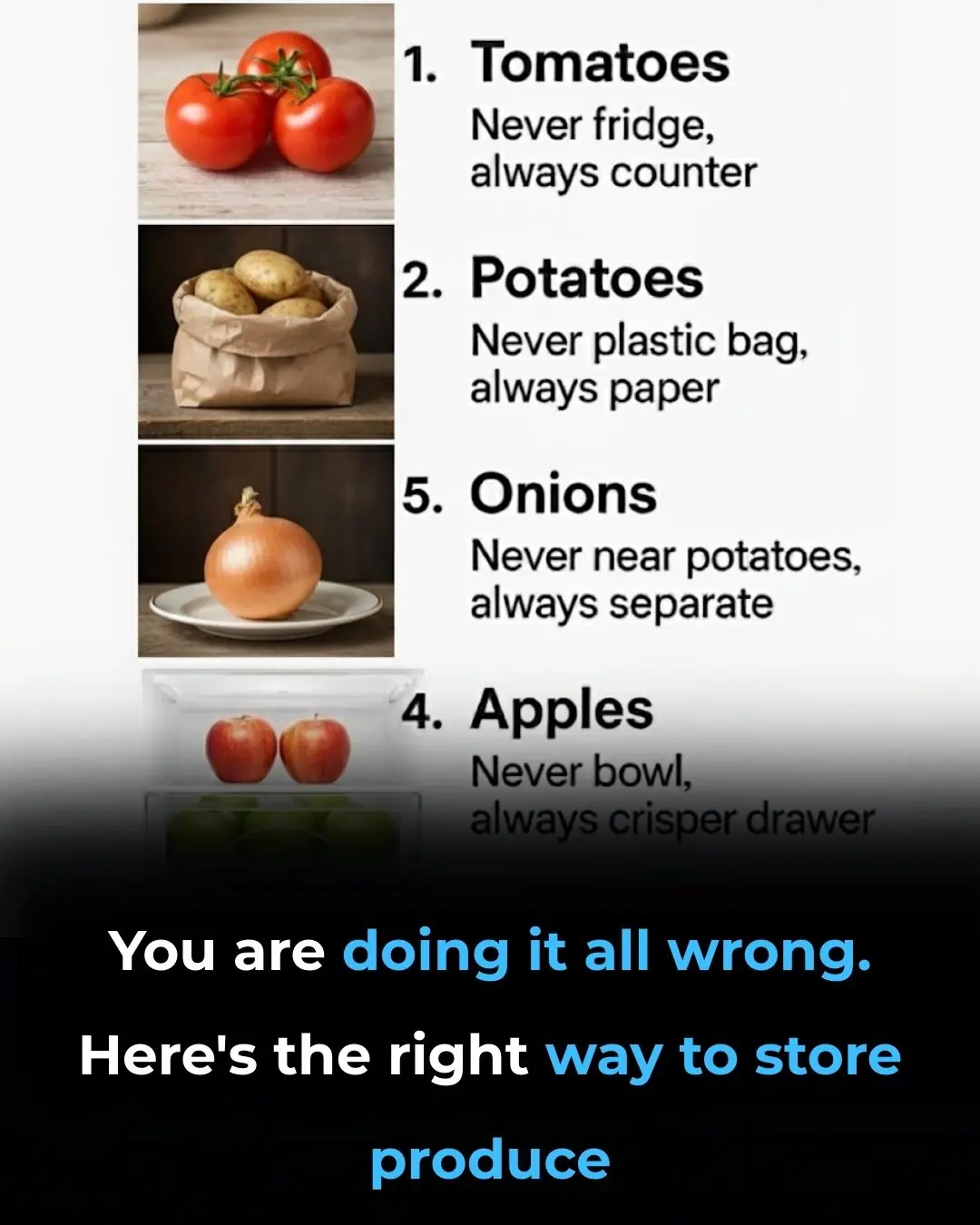
You’re doing it all wrong. Here’s the right way to organize fridge
In today’s fast-paced world, the refrigerator is one of the most essential appliances in any home. It keeps our food fresh, extends the life of perishables, and helps us reduce waste. Yet despite its importance, many people treat the fridge like a storage box—placing groceries wherever they fit, without considering whether those spots are actually the best place for them.
An unorganized refrigerator doesn’t just look messy. It can lead to food spoilage, cross-contamination, unpleasant odors, and even health risks. Proper refrigerator organization isn’t merely about aesthetics; it’s a practical strategy to maintain freshness, improve energy efficiency, and make daily life easier.
This guide walks you through the correct way to organize your fridge, so your food stays fresher longer and everything you need is easy to find. Say goodbye to chaos—and hello to a cleaner, safer, more functional fridge.
1. Why Proper Fridge Organization Matters
Organizing your fridge is about more than tidiness; it directly affects food safety and waste reduction.
✔ Freshness & Food Safety
Different foods require different temperatures. Storing items in the wrong area can cause them to spoil faster or develop harmful bacteria. For example:
-
Raw meat belongs on the bottom shelf where it is coldest.
-
Cooked foods must be stored higher to avoid contamination.
Maintaining temperature consistency prevents bacterial growth and helps food stay at peak quality.
✔ Saves Time and Money
A well-organized fridge means:
-
You see everything clearly.
-
You stop buying duplicates.
-
Hidden leftovers no longer go to waste.
Efficient organization supports smarter meal planning and reduces grocery costs.
2. Understanding the Ideal Temperature Zones
Knowing where the coldest and warmest sections of your refrigerator are is essential.
-
Main compartment: 37°F (3°C) to 40°F (4°C)
-
Back of shelves: Coldest
-
Door: Warmest
-
Crisper drawers: More humidity, ideal for produce
Where Each Food Type Belongs
-
Dairy (milk, yogurt): Middle or lower shelves, towards the back
-
Meats & fish: Bottom shelf
-
Fruits & vegetables: Crisper drawers
-
Condiments: Refrigerator door
-
Leftovers: Upper shelves
Proper placement ensures optimal freshness and prevents spoilage.
3. Never Store Milk in the Door — Here’s Why
Milk is highly perishable and must be kept consistently cold.
The door, however, warms up every time the fridge opens. These temperature fluctuations speed up bacterial growth and shorten milk’s lifespan.
Best Practice:
Store milk in the middle or bottom shelf, near the back, where temperature is coldest and most stable.
4. Keep Produce Ventilated—Not Sealed
Many fruits and vegetables release ethylene gas, which can accelerate ripening and spoilage when trapped.
To keep produce fresh:
-
Use the crisper drawers—they balance airflow and humidity.
-
Store produce in perforated bags or vented containers.
-
Separate ethylene emitters (like apples and bananas) from ethylene-sensitive foods (like leafy greens).
Proper ventilation helps produce stay crisp and flavorful longer.
5. Eggs Belong on the Middle Shelf
Even though fridges come with egg holders in the door, that’s not the ideal spot due to temperature instability.
Store eggs:
-
On the middle shelf
-
In their original carton (it prevents odor absorption and protects the shells)
Stable temperatures help eggs retain freshness and quality.
6. Avoid Overloading—Airflow Is Everything
A packed fridge blocks cold airflow, causing warm pockets and uneven temperatures. This leads to faster spoilage.
Best rule of thumb:
Keep your fridge about 75% full.
This allows air to circulate freely.
Regularly remove expired food or unused items to maintain space and efficiency.
7. How to Properly Store Meats & Fish
Raw meats and fish pose the highest contamination risk.
Store them:
-
On the bottom shelf (coldest area)
-
In sealed containers or on a tray to catch drips
-
Freeze anything not used within 1–2 days
This prevents cross-contamination and preserves quality.
8. Organizing Condiments the Right Way
Condiments typically contain salt, vinegar, or preservatives, making them suitable for the refrigerator door.
Tips:
-
Group items by category (sauces, dressings, spreads).
-
Keep frequently used items at eye level.
-
Discard duplicates and expired jars.
A tidy door speeds up meal prep and saves space in the main fridge area.
9. Use Clear Containers for Better Visibility
Opaque containers hide leftovers—and forgotten food quickly becomes waste.
Advantages of clear containers:
-
You see contents instantly
-
Encourages you to use leftovers
-
Reduces unnecessary purchases
-
Makes organization easier and more uniform
Labeling containers with the date helps track freshness.
10. The Importance of Regular Cleaning
A clean fridge is essential for hygiene and food safety.
Cleaning checklist:
-
Remove all items
-
Wipe shelves with mild detergent
-
Rinse with warm water
-
Clean door seals and drawer tracks
-
Check expiration dates before putting items back
Cleaning every 2–3 weeks prevents odors and bacteria from building up.
11. Handling Leftovers and Expiry Dates
Leftovers should never become “mystery containers.”
Smart leftover management:
-
Use clear, airtight containers
-
Label with prep date
-
Use within 3–4 days
For better management, keep a simple list of items nearing expiration. This makes meal planning easier and prevents food from being forgotten and wasted.
Final Thoughts
A well-organized fridge is more than a convenience—it’s an investment in your household’s health, hygiene, and efficiency. When food is stored in the right places, stays at the right temperature, and is easy to find, your meals become fresher, safer, and simpler to prepare.
With thoughtful organization, smart use of storage zones, and regular upkeep, your refrigerator becomes a reliable ally in healthier living.
News in the same category


Clothes are easily wrinkled when washed: Put something cheap in the machine when washing, the clothes will come out flat.

Refrigerator leaks water, slows down cooling: Women can learn how to fix it themselves, no need to call a technician

Quick & Easy Freezer Defrost Hack: Melt Ice in Just 5 Minutes with Zero Effort

Frozen Pork? Don’t Soak It in Water! Use This Trick to Thaw in 10 Minutes and Keep It Fresh

Clothes Turning Yellow? This Simple Trick Will Make Them Bright White Again

Tried this the other day and it did wonders!

4 Warning Signs on Hands and Feet You Should Not Ignore Before Cancer Strikes

7 Drinks to Cleanse Phlegm, Boost Lung Health, and Combat Bacteria and Viruses

You are doing it all wrong. Here's the right way to store produce

How to Clean a Showerhead to Prevent Clogging: Simple Tips to Keep It Working Like New Without Spending on Replacements

The Health Benefits of Black Bean Soup with Chicken Feet: As Effective as Ginseng

Put a drop of essential oil on clothes while soaking: "Special" use, not everyone knows how to apply it

Tips for using air conditioners, staying cool all day without worrying about skyrocketing electricity bills

How to stew delicious braised meat with Northern style, great to eat with rice in cold weather

10 ways to get rid of cockroaches from your home permanently, simple, safe and economical

How to fry delicious, crispy spring rolls that won't get soggy: Remember not to put them in boiling oil right away.

Smart people always put a towel in the refrigerator, knowing its uses everyone wants to learn from it.

Scientists May Have Just Found a Breakthrough Hair-Loss Treatment
News Post

How to Make Fennel Seeds Water/Tea – Benefits of Fennel Seeds for Weight Loss & Health

Israel’s Innovative Smart Water Pipes: Revolutionizing Water Infrastructure and Renewable Energy Generation

Drink one cup daily of this juice to UNCLOG arteries?

Jorge the Loggerhead Turtle: A Story of Rehabilitation, Freedom, and Remarkable Resilience

Don’t ignore your legs: the surprising early signs of pancreatic cancer

Revolutionary Discovery: Reprogramming Cancer Cells to Restore Health and Transform Treatment

Canadian Scientists Develop Mini Robot to Treat Kidney Stones Without Surgery

12 medications you should never mix with coffee

Juniper: 20 Remarkable Benefits and How to Use It

🚿 8 Bathroom Habits That Ruin Your Feeling of Freshness (And How to Fix Them)

Homemade Herbal Hair Oil – Adivasi Hair Oil

Rebuilding with Purpose: Japan’s Monumental Tsunami Wall and Living Forest Shield

Which Raw Food Would You Eat

WARNING: This common pill causes dementia

A Heartfelt Goodbye: Graduate’s Simple Thank-You Moves Security Guard to Tears

This Is One Of The Most C.ancer-Causing Foods – Stop Eating It!

Put aluminum foil under the pillow before going to bed what happens

💉 The Future of Cardiac Screening: New Blood Test Detects Hidden Heart Disease Years Before Symptoms
